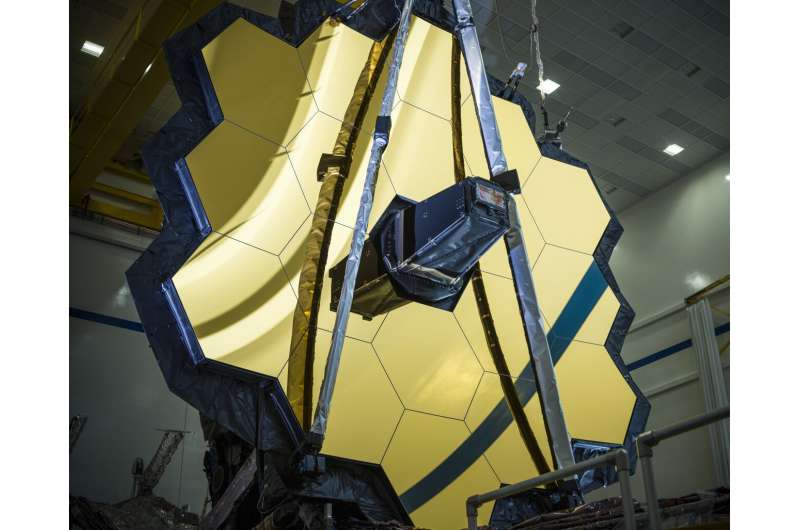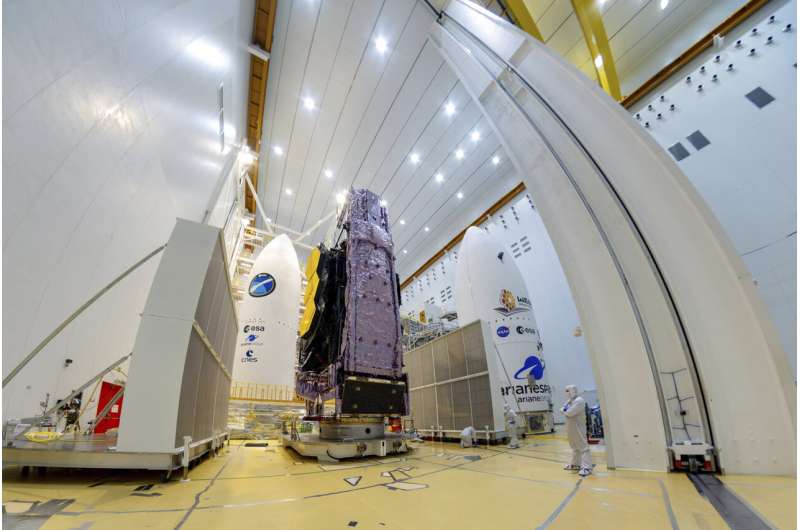This March 5, 2020 photo made availalble by NASA shows the main mirror assembly of the James Webb Space Telescope during testing at a Northrop Grumman facility in Redondo Beach, Calif. Webb will attempt to look back in time 13.7 billion years, a mere 100 million years after the universe-forming Big Bang as the original stars were forming. Credit: Chris Gunn/NASA via AP
Dangerously high wind will keep NASA's newest space telescope on the ground for at least an extra day, with the launch now targeted for Saturday—Christmas Day—at the earliest.
NASA announced the latest delay Tuesday. Upper-level high wind could force a rocket off-course or even damage or destroy it.
The James Webb Space Telescope will soar from French Guiana on South America's northeastern coast, aboard a European Ariane rocket. Launch managers will meet again Wednesday to assess the weather.
The $10 billion infrared observatory is considered the successor to the Hubble Space Telescope, in orbit since 1990.
During a news conference Tuesday, NASA officials said the rocket and telescope were in good shape, and that the only lingering, though tolerable problem was an intermittent communication relay between the two. The issue earlier forced a two-day delay; a clamp that inadvertently jolted the telescope at the launch site had prompted a four-day slip.
These last-minute snags come after years of delays and cost overruns for Webb, the biggest and most powerful science observatory ever built for space.
NASA is partnering with the European and Canadian space agencies on the project.
In this Saturday, Dec. 11, 2021 photo provided by the European Space Agency, the NASA James Webb Space Telescope is mounted on top of the Ariane 5 rocket that will launch it from Europe's Spaceport in French Guiana. Webb is so big that it had to be folded origami-style to fit into the nose cone of the rocket. Credit: M. Pedoussaut/ESA via AP
© 2021 The Associated Press. All rights reserved. This material may not be published, broadcast, rewritten or redistributed without permission.

























